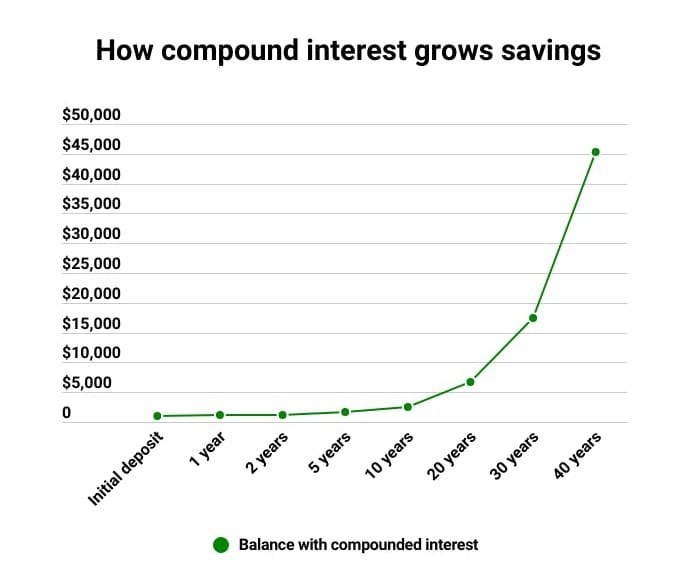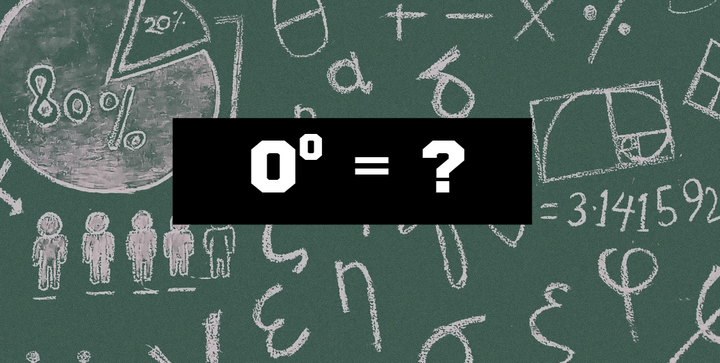The Ingenious Workings of Card Counting
Discover the fascinating world of card counting and how it works. This blog post explores the techniques used by skilled players to gain an edge over the casino in blackjack and other card games. Learn about the history, the math behind it, and the legalities of this controversial practice.

Card counting is a controversial and heavily debated topic in the world of casino gambling. The practice of card counting involves keeping track of the cards that have been dealt during a game of blackjack or other card games in order to gain an advantage over the casino. While some view card counting as a legitimate strategy for skilled players to increase their odds of winning, many casinos view it as cheating and have implemented measures to prevent or discourage its use. Despite the controversy surrounding card counting, it remains a popular topic of study for researchers and academics interested in the mathematics behind gambling. This article aims to provide a comprehensive review of the mathematical theory behind card counting, specifically in the game of blackjack, and explain the procedure involved.
The Game of Blackjack
In a casino, blackjack is typically played at a table with one or more decks of cards, usually six to eight. The objective of the game is to have a hand with a total value closer to $21$ than the dealer's hand, without going over $21$.
Here are the basic steps in playing blackjack in a casino:
- Players place their bets: Before any cards are dealt, players must place their bets in the designated betting area on the table.
- Cards are dealt: The dealer will then deal two cards to each player and two cards to themselves. One of the dealer's cards is placed face up, while the other is face down (known as the "hole" card).
- Players make decisions: Each player will then decide whether to "hit" (take another card), "stand" (keep their current hand), "double down" (double their bet and receive one more card), or "split" (if they have two cards of the same value, they can split them into two separate hands).
- The dealer reveals their hand: Once all players have made their decisions, the dealer will reveal their hole card and make decisions based on the game's rules. Generally, the dealer must hit until they have a total of $17$ or higher.
- Payouts: If a player's hand is closer to $21$ than the dealer's hand without going over, the player wins and is paid out at a rate. If the dealer's hand is closer to $21$ or if the player's hand goes over $21$, the player loses their bet.
- Cards are collected and shuffled: Once the round is over, the cards are collected, and the dealer will shuffle the deck for the next round. In some casinos, the cards are not shuffled after every round. Instead, they are shuffled usually after around $50%$ of the cards have been dealt. This is when card counting can be applied to increase the chance of winning.
These are the basic steps in playing blackjack in a casino, but there may be variations in rules and gameplay depending on the casino and the specific game variant being played.
Card Counting in Blackjack
While card counting can provide an advantage in blackjack, it does not guarantee wins in every hand.
Card counting in blackjack is possible due to the mathematical theory of conditional probability. In blackjack, conditional probability is used to determine the likelihood of drawing a certain card based on the cards that have already been played.
Conditional probability is a measure of the likelihood of an event occurring, given that another event has already occurred. In the case of blackjack, the probability of drawing a certain card is dependent on the cards that have already been played, and the composition of the remaining cards in the shoe.
For instance, a player is counting cards in a blackjack game and has determined that there are more high cards (cards with a value of $10$ or above) remaining in the shoe than low cards (cards with a value of $9$ or below).
Based on this information, the player can use the mathematical theory of conditional probability to estimate the likelihood of drawing a high card on the next round.
Let's say that there are $2$ decks remaining in the shoe, and the player has already seen $1$ Ace, 6 Kings, $3$ Queens, $2$ Jacks, and $7$ tens. This means that there are $21$ high cards ($7$ Aces, $2$ Kings, $5$ Queens, and $6$ Jacks and $1$ ten) remaining in the shoe.
The total number of cards remaining in the shoe is $85$ ($2$ decks x $52$ cards per deck or $19$ high cards), and the number of high cards remaining is $21$. This means that the probability of drawing a high card on the next round is:
$\frac{21}{85}=0.247$ or approximately $24.7%$
This is just one example of how conditional probability can be used to inform the card-counting strategy in blackjack. Overall, the mathematical theory of conditional probability makes card counting possible in blackjack by allowing players to estimate the likelihood of certain events occurring based on the cards that have already been played. This allows skilled players to gain an edge in the game and improve their chances of winning.
The Basic Strategy Table
Once we understand the mechanics of blackjack, we can now move on to studying card counting techniques. Prior to counting cards, it is crucial for card counters to familiarise themselves with the basic strategy table. This table holds significant importance, especially at the initial stages of card counting, as it provides a guide for optimal playing decisions based on the player's hand value and the dealer's up-card. By playing the perfect strategy, it cuts the casino’s advantage to roughly half of $1%$, but they still have a very slim advantage over the players.
The basic strategy table provides a framework for making the best possible decisions in every situation, regardless of the count. It gives you a foundation to build on, allowing you to adjust your playing decisions based on the count and take advantage of favorable situations when they arise.
The basic strategy table in card counting is constructed on the mathematical concept of probability and the theory of decision-making under uncertainty. The table is designed to provide players with the best possible move to make in any given situation in order to maximize their chances of winning.
The basic strategy is based on the assumption that the dealer's hole card is a $10$-value card. This assumption is based on the fact that there are more $10$-value cards in the deck than any other card, making it the most likely card for the dealer to have in the hole.
The table takes into account the player's hand total and the dealer's up card and provides the player with the best possible move to make in that situation. For example, if the player has a total of $12$ and the dealer has a $2$, the table recommends that the player hit, as this gives them the best chance of improving their hand.
The basic strategy table is based on mathematical calculations and simulations that take into account the probability of each possible outcome in a game of blackjack. By following the basic strategy, players can minimize the house edge and increase their chances of winning over the long term.
Overall, the basic strategy table is an essential tool for any blackjack player, including those who are card counters. It provides a solid foundation for optimal playing decisions and can help maximize your winnings over the long term.
The Card Counting Procedure
As mentioned above, a perfect basic strategy does not help players gain an advantage over the casino but rather cuts their advantage down. To actually gain an advantage over them, card counters will have to master the skill of card counting.
The procedure for card counting involves assigning a point value to each card that is dealt. A simple system might be to assign a value of $+1$ to cards $2–6$, 0 to cards $7-9$, and $-1$ to cards $10$-Ace. This system is known as the hi-lo method, and the values represent the effect each card has on the game's odds.
Cards $2$ through $6$ are considered "low" cards, and their presence in the deck favors the dealer because they increase the likelihood of the dealer getting a hand that is closer to $21$ without busting. Since the dealer is required to hit until they reach a total of $17$ or higher, having a low-value card as the first card increases the likelihood of the dealer reaching a total of $17$ or higher without busting.
Furthermore, when the deck has a higher concentration of low-value cards, it is less likely that the player will get a natural blackjack, which pays out at a higher rate than a standard win. This gives the dealer an advantage, as the player will have a harder time winning the hand and may be more likely to lose.
Finally, a deck with a higher concentration of low-value cards can also increase the dealer's chances of winning when the player chooses to hit or stand, as the dealer may be more likely to end up with a higher total hand value. As a player, it is beneficial to have fewer low cards in the deck, which is why we add one to the count when a low card is dealt.
Cards $7$ through $9$ are considered "neutral" because their effect on the game's odds is minimal. Therefore, they are assigned a value of zero when counting.
Cards $10$ through Ace are considered "high" cards, and their presence in the deck favors the player because they increase the likelihood of the player getting a natural blackjack (an Ace and a $10$-value card as the first two cards), which pays out at a higher rate than a standard win.
Additionally, when the deck has a higher concentration of high-value cards, it's more likely that the dealer will bust (exceed a total of $21$) since they are required to hit until they reach a total of $17$ or higher. This gives the player a strategic advantage, as they can adjust their playing decisions accordingly and potentially increase their chances of winning.
The running count in the above picture would be $-1+0-1+1+0=-1$.
By keeping track of the running count of these cards, card counters can gain insight into the composition of the deck and adjust their bets accordingly. The running count is the count of the cards based on the values assigned to the individual cards in the deck. When the count is positive, it means that there are more high cards remaining in the deck, and the player has an advantage. Conversely, when the count is negative, there are more low cards remaining, and the dealer has an advantage.
The player can also use the running count to calculate the true count. The true count is the running count divided by the number of decks remaining in the shoe. For example, if the running count is $+6$, and there are two decks remaining in the shoe, the true count is $+3$. The true count gives a more accurate estimate of the deck composition and the player's advantage.
Even after mastering the skill of card counting, the basic strategy table mentioned earlier remains important. While card counting can give players an edge in the game, it is not enough on its own to guarantee a win. The basic strategy table provides guidance on the optimal play for every possible player hand and dealer upcard combination. Following the basic strategy table can help players make the best decisions in each hand, maximizing their chances of winning and minimizing their losses. In fact, combining the use of the basic strategy table with card counting can provide an even greater advantage for players in blackjack.
Card counters can modify the basic strategy table according to the running count and true count by adjusting their playing decisions based on the count. As the count becomes more positive, indicating that there are more high cards left in the shoe, players can increase their bets and make more aggressive playing decisions, such as doubling down and splitting pairs more frequently.
In contrast, as the count becomes more negative, indicating that there are more low cards left in the shoe, players should decrease their bets and make more conservative playing decisions, such as hitting more often and avoiding doubling down or splitting pairs.
Expected Values (EV)
The expected value (EV) of a hand represents the average gain or loss that a player can expect from that hand in the long run. It is calculated by multiplying the probability of each possible outcome by the amount won or lost in that outcome.
The basic strategy table offers a set of predetermined choices based on certain scenarios that will yield the highest possible expected value for the player. Therefore, it is crucial not to always choose the option with the highest expected value, even if our intuition or personal preference suggests otherwise.
As an example, when faced with a 10 from the dealer and holding a $13$, you have two options: either to hit and take another card or to stay and pray. The mathematics behind the basic strategy table suggests that staying will give you an expected value (EV) of $32%$ while hitting will increase your EV to $36%$. By consistently making the right decisions based on expected outcomes like this, over time, the mathematics will work out in your favor, giving you a slight edge over the casino and making you a winning player.
Keep in mind that this example simplifies many aspects of blackjack and card counting, such as the player's actions, betting strategy, and the complexity of the deck's composition. All these factors will affect the outcome and produce a deviation from the EV, which is called variance. A gambler focuses on the short-term result, while card counters think about the long haul.
Bet Spread
In blackjack, bet spread refers to the range of bet sizes that a player uses in response to the count of the cards. This strategy is often employed by card counters, who keep track of the count of the cards as they are played in order to determine when the deck is favorable to the player. The goal of a bet spread is to bet less when the casino has the advantage and bet more when the player has the advantage.
The bet spread is an essential part of a successful card counting strategy, as it allows the player to maximize their profits and minimize their losses over the long run. As the true count increases, the player can proportionally increase their bet size based on the size of their bankroll and the degree of their advantage.
An example to calculate bet spread:
- Betting in $10$ dollar increments
- The bet ranges from $10$ dollars to $100$ dollars
- Bet spread = $10 : 100 (1 : 10)$
Therefore, the bet spread of the example above is $1 : 10$ because the top bet, $100$ dollars, is $10$ times the initial bet of $10$ dollars.
The goal is to not have a certain repeated bet spread but to maximize EV and minimize risk. Bet spreading correlates to maximizing the EV in card counting because it allows the player to increase their bet size when the count is in their favor, and decrease their bet size when the count is against them.
By adjusting the bet size based on the count, players can increase their expected value by betting more when the odds are in their favor and less when they are not. This strategy helps to maximize their winnings and minimize their losses, resulting in a higher expected value over time.
However, it is important to note that bet spreading alone is not enough to guarantee a profit in blackjack. It is just one component of a larger strategy that also includes using optimal basic strategy, maintaining an accurate count, and managing risk effectively.
Estimating the Probability of Drawing a Certain Card
We can use the true count to estimate the probability of drawing a certain card. For instance, if the true count is $+6$ and there are approximately $3$ decks remaining, there are approximately $6$ extra high cards ($10$, J, Q, K, A) in those decks.
To estimate the probability of drawing a high card:
- Assuming a standard blackjack deck with $52$ cards, there are $20$ high cards (ten, jack, queen, king, and ace) and $32$ non-high cards ($2-9$) in the deck.
- To calculate the probability of drawing a high card, we need to first calculate the ratio of high cards to non-high cards remaining in the deck, based on the true count.
- To do this, we divide the running count by the number of decks remaining. In this case, the true count is $+6$ and there are $3$ decks remaining, so the ratio of high cards to non-high cards is:
$$\frac{\left(20\left(3\right)+6\right)}{\left(32\left(3\right)\right)}=\frac{11}{16}$$
which satisfies:
[(number of high cards in each deck * number of decks remaining) + true count] / (number of low cards in each deck * number of decks remaining)]
This means that for every 27 cards remaining in the deck, we can expect to see 11 high cards and 16 non-high cards.
So the probability of drawing a high card from the remaining deck, given a true count of +5 and 3 decks remaining, is:
$\frac{11}{\left(11+16\right)}=\frac{11}{27}$ or approximately $0.407$ or $40.7%$.
$P($high card$)$ $=$ number of high cards / total cards remaining
The Theory Behind Card Counting
Card counting is based on the concept of probability. In a standard deck of 52 cards, there are four suits, each with thirteen cards. Thus, the probability of drawing any one card from the deck is 1 in 52. However, as cards are dealt, the composition of the deck changes, and the probability of drawing a particular card changes as well.
The mathematical theory and concept behind the basic strategy table has been proven and stimulated by various researchers and computers over the past decades. I will be providing an example in the table below to briefly explain the concept behind it.
The assumption made by the basic strategy table:
the hole card of the dealer is always a $10$-value card
Based on the assumption made, the dealer total now would be 10 + 5= 15. The player now has 16 which is already greater than what the dealer has. In this case, the basic strategy table suggests the player stand with what they have. The dealer will then have to hit another card as they have to reach the minimum value of 17. The probability of the dealer going over 21 is calculated below.
So, the probability of busting $=\frac{7}{13}$
This fully explains why the table suggests the player to stand as the probability of the dealer going over 21 is slightly higher than the probability of a draw or losing a game.
Conclusion
Card counting is a technique used to improve a player's odds of winning in casino gambling games, by around 1-2%. The procedure involves assigning point values to cards and keeping a running count of the point values as the cards are dealt. The mathematical theory behind card counting involves the concept of expected value and the player's advantage over the house edge.
Before attempting to count cards in blackjack, card counters should have a good understanding of the game's basic strategy. This includes knowing when to hit, stand, double down, split pairs, and when to surrender, all calculated and summarized by the basic strategy table.
Once a solid grasp of basic strategy is achieved, players can then move on to learning the card counting system. The most popular system is the Hi-Lo system, which this research article scaffolded on, involving assigning point values to each card.
To count cards effectively, the running count of the cards that have been dealt must be kept track of. To achieve this, add or subtract the point values of each card as they are played. The true count can then be calculated which is the running count divided by the approximate number of decks remaining in the shoe. This value provides card counters with a more accurate interpretation of the game, by taking the remaining number of decks into account.
The concept of card counting mainly revolves around the mathematical concept of probability, specifically conditional probability in some aspects. Card counting is not a foolproof method and requires skill and discipline to execute properly. As with any form of gambling, there are risks involved and players should always gamble responsibly.
References
- Blackjack 101: Thinking in terms of Ev (2018) YouTube. Blackjack Apprenticeship. Available at: https://youtu.be/m3clIoygKNg.
- Understanding bet spreads in Blackjack (2019) YouTube. Blackjack Apprenticeship. Available at: https://youtu.be/SMI658mNMFk.
- Winning blackjack basic strategy (2018) YouTube. Blackjack Apprenticeship. Available at: https://youtu.be/MQHtVmkTesQ.



